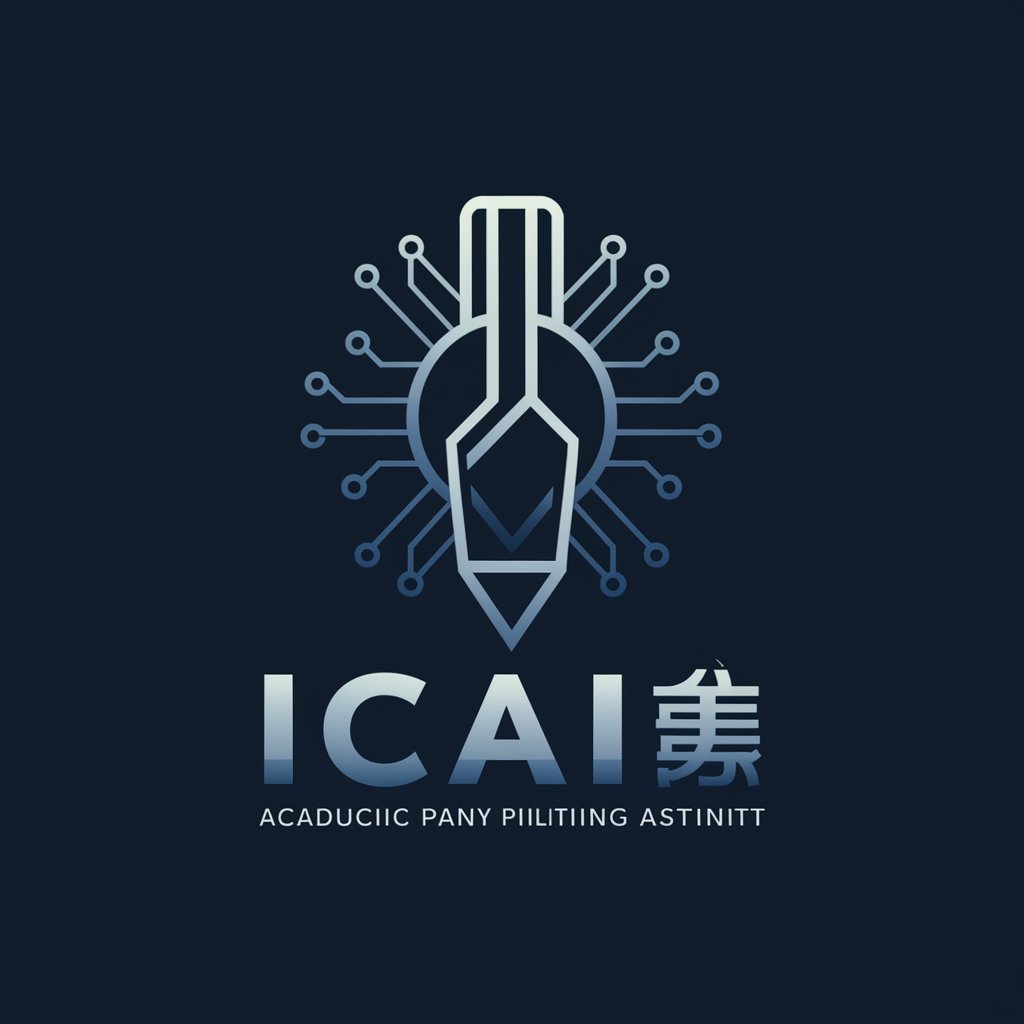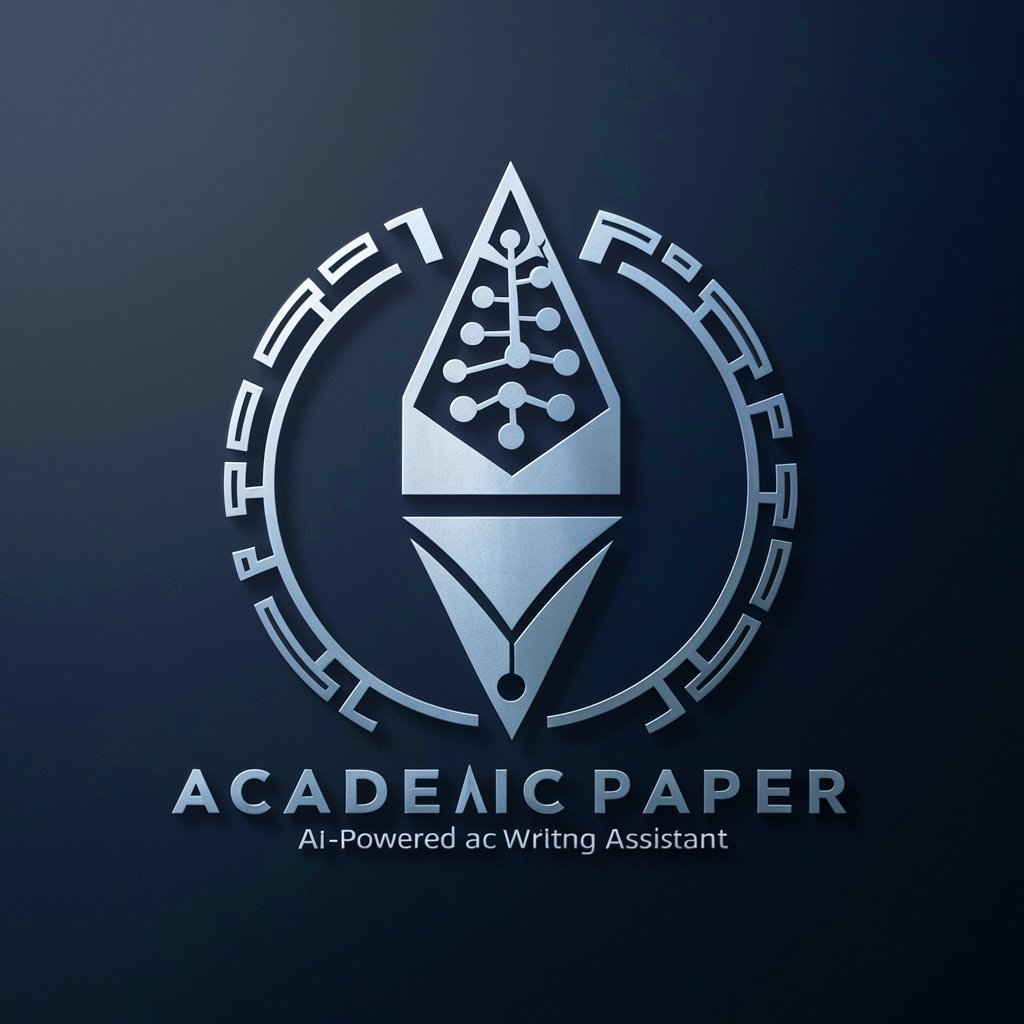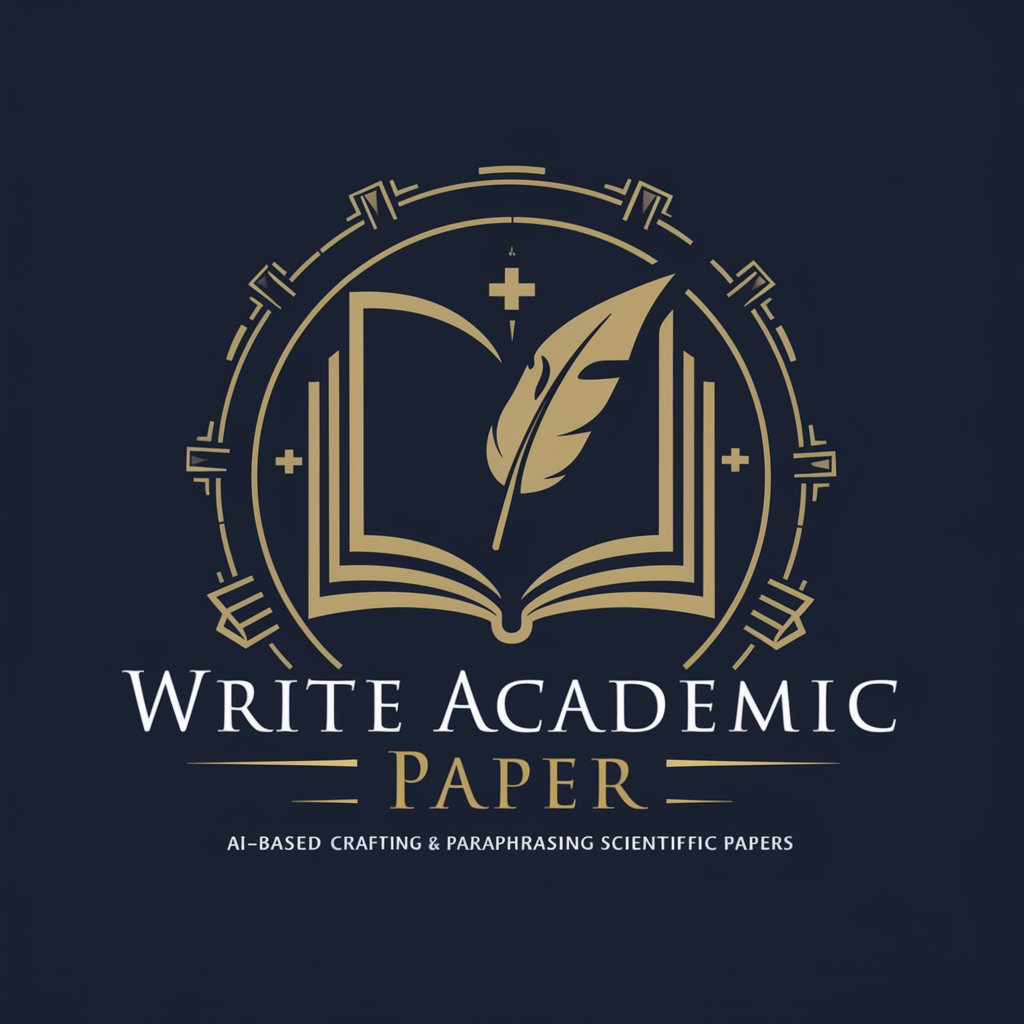
Academic Paper Polisher - academic editing, journal standards
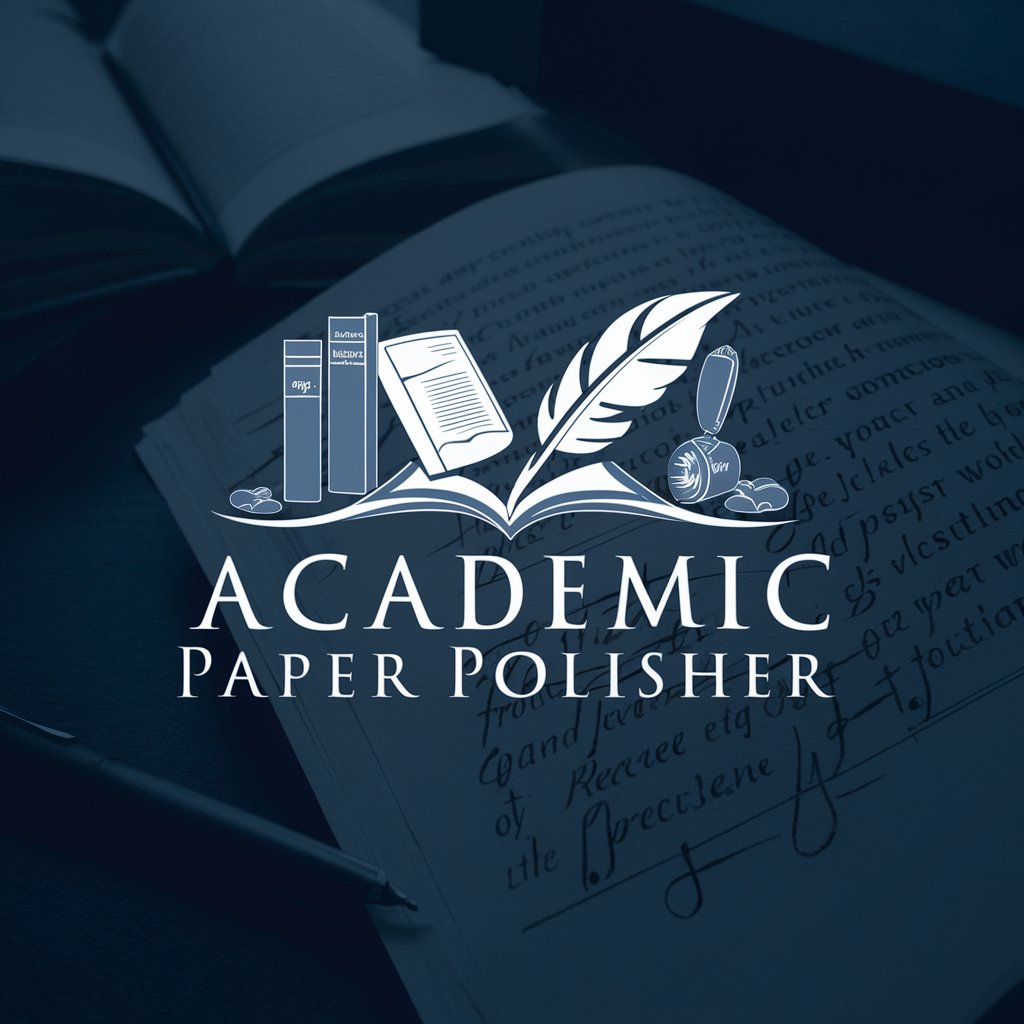
Welcome to Academic Paper Polisher, your partner in publishing excellence.
Empowering scholarly precision with AI
How can I improve the structure of my introduction?
What are the key elements of a strong conclusion?
Can you help clarify this complex sentence?
What are the common formatting standards for journal submissions?
Get Embed Code
Understanding Academic Paper Polisher
Academic Paper Polisher is designed as a specialized digital assistant to enhance the clarity, flow, and presentation of academic papers to meet the rigorous standards of scholarly publication. Primarily, it scrutinizes textual content, ensuring it adheres to academic norms and stylistic requirements typical of high-impact journals like those indexed in SCI, Nature, and SSCI. This tool meticulously refines language, polishes grammar, and streamlines argumentation without altering the underlying research findings or academic integrity. For example, if a researcher submits a draft discussing complex biochemical interactions, Academic Paper Polisher would refine the technical jargon, ensuring it is precise yet accessible, while also enhancing the logical flow of arguments, making the paper more appealing to journal reviewers. Powered by ChatGPT-4o。

Core Functions of Academic Paper Polisher
Language Refinement
Example
Transforming 'The experiment was done to see if we could better understand' to 'The experiment aimed to enhance understanding of'
Scenario
An early-career researcher writing a paper on cognitive neuroscience might use overly verbose or colloquial language that the tool will streamline to meet publication standards.
Structural Optimization
Example
Reorganizing sections of a manuscript for better logical flow, such as moving detailed methodological discussions to supplementary materials if they disrupt the narrative.
Scenario
In a multidisciplinary team working on climate change, structural optimization helps align the contributions of various authors into a coherent argument, enhancing the paper’s overall impact.
Compliance with Journal Style
Example
Adjusting citation format and references style to align with specific journal requirements.
Scenario
A sociologist submitting to an SSCI journal might need adjustments to fit into the specific referencing style like APA or MLA, which the tool automatically handles.
Who Benefits from Academic Paper Polisher?
Early-Career Researchers
This group often struggles with the nuances of academic writing, including structuring arguments effectively, using appropriate academic language, and adhering to strict editorial standards. Academic Paper Polisher assists by enhancing their draft manuscripts to publication-ready standards.
Non-Native English Speakers
Researchers for whom English is a second language may find it challenging to express complex ideas with clarity and precision. Academic Paper Polisher helps refine their language use, ensuring their research is judged on merit, not language proficiency.
Interdisciplinary Research Teams
These teams combine knowledge from different fields, often resulting in papers with varying tones and styles. The tool can unify these diverse elements into a single, coherent document that meets the interdisciplinary journal's criteria.

How to Use Academic Paper Polisher
Start Here
Visit yeschat.ai for a free trial without login, also no need for ChatGPT Plus.
Prepare Your Document
Gather the academic papers or drafts you intend to refine. Ensure your document is in a compatible format such as .docx, .pdf, or plain text.
Upload and Specify
Upload your document to the interface. Specify any particular journal guidelines or style preferences you want the polisher to adhere to.
Review Suggestions
Evaluate the edits and suggestions made by the Academic Paper Polisher. The system will offer grammatical corrections, style enhancements, and structure optimizations.
Finalize and Export
Make any necessary adjustments based on the suggestions. Export the polished paper in your desired format for submission or sharing.
Try other advanced and practical GPTs
Cyber-Civil Rights Bot
AI-Powered Cyber and Civil Rights Advisor

Mulesoft Advisor
Streamline Salesforce with AI-powered Mulesoft Advisor

脱出せよ!!恐怖のおもちゃ工場
Escape the horror, puzzle your way out!

“Rozum do kapsy”
Discover More with AI-Powered Exploration

CLW
Empowering Your Creativity with AI
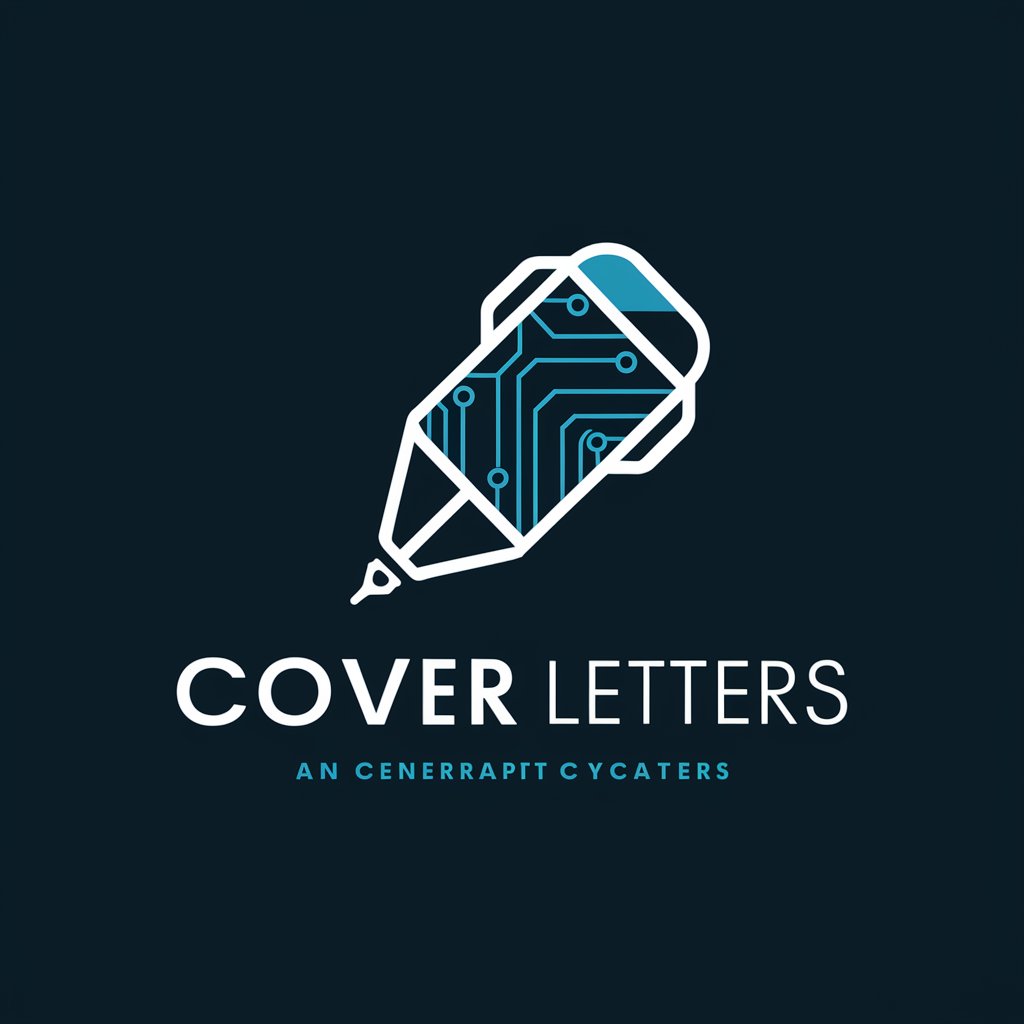
Symbolab Math Solver
Unravel Math with AI

VivaSpheres - CAPRI AI Agent
Optimizing Code Development with AI

Lily
Empower your well-being with AI

Code Integrator
Streamlined, AI-driven UI code merging.

Clothes
AI-Driven Personal Stylist at Your Fingertips

Deep_ART GPT
Transforming pets into masterpieces.

AP Tutor Pro
Empowering education with AI.

Frequently Asked Questions About Academic Paper Polisher
What types of documents can Academic Paper Polisher refine?
Academic Paper Polisher is designed to work with scholarly articles, research papers, dissertations, and similar academic writings. It supports formats like DOCX, PDF, and text files.
How does the polisher adhere to specific journal requirements?
The tool uses customizable settings to align with different journal requirements, including citation styles, formatting guidelines, and structure preferences.
Can the Academic Paper Polisher help with non-English papers?
Currently, the Academic Paper Polisher primarily supports English-language documents. However, it can handle basic multilingual texts where English is the primary language.
Is the Academic Paper Polisher suitable for undergraduates?
Yes, it is beneficial for any academic level, including undergraduates, postgraduates, and researchers, to enhance the clarity and professionalism of their work.
What are the main features of Academic Paper Polisher?
Key features include grammar and syntax corrections, adherence to academic writing standards, style enhancement, and structural suggestions based on top-tier journal standards.

